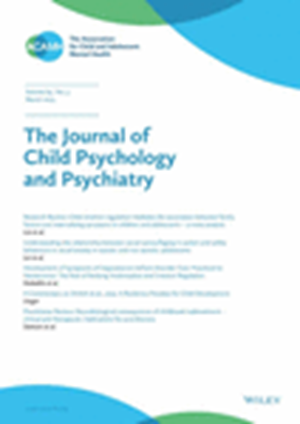Research Review: What we have learned about the endocannabinoid system in developmental psychopathology
IF 7
1区 医学
Q1 PSYCHIATRY
引用次数: 0
Abstract
BackgroundThe endocannabinoid (eCB) system, the primary target of cannabis, has gained significant attention as a potential novel therapeutic approach for treating a range of psychiatric disorders characterized by dysregulation of stress, emotion, and social behavior. The use of cannabis itself as a pharmacotherapeutic in children and adolescents is limited due to various constraints, including legal status, stigma, and real or perceived negative side effects. Thus, compounds that target the eCB system without the notable unwanted effects of cannabis may offer a more viable approach for developing populations.MethodsIn this narrative review, we provide an overview of the eCB system, summarizing its function throughout development and its potential contribution to psychopathology in children and adolescents. We highlight evidence of its behavioral role and the dysregulation of this system in various psychiatric disorders. Finally, we summarize current investigations into pharmacological and nonpharmacological therapeutic interventions designed to target the eCB system.ConclusionsThe eCB system may offer an innovative target for treatments of various psychiatric disorders in child and adolescent populations. However, more research is needed to understand the nuanced developmental trajectory of this system and to determine whether existing compounds are safe and effective for use in these populations.研究综述:内源性大麻素系统在发育性精神病理学中的作用
内源性大麻素(eCB)系统是大麻的主要靶点,作为一种潜在的新型治疗方法,用于治疗一系列以压力、情绪和社会行为失调为特征的精神疾病,已经引起了极大的关注。由于各种限制,包括法律地位、耻辱以及实际或感知的负面副作用,将大麻本身用作儿童和青少年的药物治疗受到限制。因此,针对eCB系统的化合物没有大麻的明显有害影响,可能为发展中人群提供更可行的方法。方法在这篇叙述性综述中,我们概述了eCB系统,总结了其在整个发展过程中的功能及其对儿童和青少年精神病理学的潜在贡献。我们强调其行为作用和该系统在各种精神疾病中的失调的证据。最后,我们总结了目前针对eCB系统的药理学和非药理学治疗干预措施的研究。结论eCB系统可能为儿童和青少年人群的各种精神疾病的治疗提供一个创新的靶点。然而,需要更多的研究来了解这个系统的细微发展轨迹,并确定现有的化合物是否安全有效地用于这些人群。
本文章由计算机程序翻译,如有差异,请以英文原文为准。
求助全文
约1分钟内获得全文
求助全文
来源期刊
CiteScore
13.80
自引率
5.30%
发文量
169
审稿时长
1 months
期刊介绍:
The Journal of Child Psychology and Psychiatry (JCPP) is a highly regarded international publication that focuses on the fields of child and adolescent psychology and psychiatry. It is recognized for publishing top-tier, clinically relevant research across various disciplines related to these areas. JCPP has a broad global readership and covers a diverse range of topics, including:
Epidemiology: Studies on the prevalence and distribution of mental health issues in children and adolescents.
Diagnosis: Research on the identification and classification of childhood disorders.
Treatments: Psychotherapeutic and psychopharmacological interventions for child and adolescent mental health.
Behavior and Cognition: Studies on the behavioral and cognitive aspects of childhood disorders.
Neuroscience and Neurobiology: Research on the neural and biological underpinnings of child mental health.
Genetics: Genetic factors contributing to the development of childhood disorders.
JCPP serves as a platform for integrating empirical research, clinical studies, and high-quality reviews from diverse perspectives, theoretical viewpoints, and disciplines. This interdisciplinary approach is a key feature of the journal, as it fosters a comprehensive understanding of child and adolescent mental health.
The Journal of Child Psychology and Psychiatry is published 12 times a year and is affiliated with the Association for Child and Adolescent Mental Health (ACAMH), which supports the journal's mission to advance knowledge and practice in the field of child and adolescent mental health.

 求助内容:
求助内容: 应助结果提醒方式:
应助结果提醒方式:


